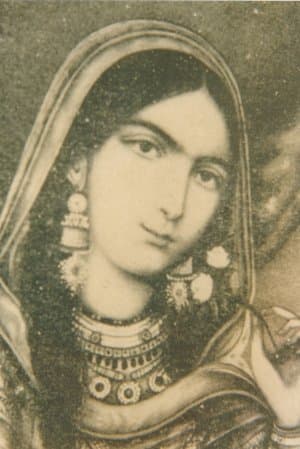(Un) Forgotten Tales of Indian Independence - Begum Hazarat Mahal

Today, the 15th of August, India is celebrating the day when the country got its freedom. It was on 15th August1947 that India was declared independent from British colonialism and reins of control were handed over to the leaders of the country. It marked the end of almost 200 years of British rule in the subcontinent.
The year of 1857 is significant in the history of India. There was a major uprising against British rule. The British called it Revolt but for Indians , it was the First war for independence. It began as a mutiny in the Company’s Bengal Army at Meerut and then erupted into other mutinies and civilian rebellions chiefly in the Upper Gangetic plains and Central India. Delhi, Kanpur, Lucknow, Jhansi, Gwalior and Patna were some of the major centres of rebellion. We all are aware of the leaders like Rani Lakshmibai, Nana Saheb, Tatya Tope who were the heroes of this struggle, there are some who remained unknown or lesser known, but played an important role in the war of 1857.
Today’s story is about one such leader, a Begum of Awadh who played a vital role in India’s struggle for freedom in 1857. She was Begum Hazarat Mahal, the second wife of Nawab Wazid Ali Shah of Awadh. Her life began with a humble origin as a daughter in a poor Syed family in Faizabad under the name Muhammadi Khanum. A courtesan by profession, she entered the royal harem as an attendant and rose to become a wife to the Nawab through a contract marriage. The title “ Hazrat Mahal” was bestowed upon her when she gave birth to a son, the Prince of Awadh Birjis Qadr.
Her abilities began to show up in1856 when Awadh was cunningly annexed by the East India Company and the Nawab was sent in exile with a part of family to Calcutta. While the Nawab chose to hand over his kingdom without a fight, the Begum stayed back in Lucknow along with her son and decided to fight for the rights of her son and Awadh.
The opportunity came a year later when the war against British rule began, she became the key figure in organizing the uprising in Awadh region. She raised a large army and gave a fierce resistance to the British forces. Behind her graceful nature and physical charm lay the qualities of a strong leader and a strategist which was seen in the war against British forces. Her leadership was so inspiring and tactful that the British lost control of most parts of Awadh and were confined to the residency building in Lucknow. The ruins of the residency speaks of the war and destruction that were caused in the war of 1857. Lucknow was the only place where the English did not leave the residency building and faced the rebels until they were able to regain their power.
On 5th of July, she triumphantly reinstated Indian rule in Awadh, handing over the throne to her son, although this victory was short lived and lasted only for ten months. The British troops returned in march 1858 and recaptured Lucknow. She fled the state with her army. Her failure to save her kingdom, however, did not deter her from attempting to organize soldiers at other places until in 1859 when she lost most of her adherents and was forced to seek asylum in Nepal where she spent the rest of her days. She also refused the hefty pension offered by the British and continued to resist British rule till she breathed her last in 1879.
She lay buried in the grounds of the Jama Masjid in Kathmandu. In an attempt to recognise her role in India’s first freedom struggle she was honoured at old Victoria park in Lucknow on 15thAugust 1962, and was commemorated with a marble memorial, bearing the coat of arms of the Awadh family. The park was renamed after her. The park is located in the heart of the city, near the famous Hazratganj market in lucknow. It once hosted many Dussehra festivals and Lucknow Mahotsav which showcase the art and culture of Awadh. It is now the most beautiful and greenest place in the city.
Efforts of Independence by her, and likes of her, are not taught in history lessons in schools, because they don’t fit neatly into the preferred narrative of how we got Independence. Even today the wikipedia page calls it The Siege of Lucknow, with a narrative not in favour of Indians. But the local myths, and the spirit of Independent India, will never let them be forgotten.
Happy Independence Day